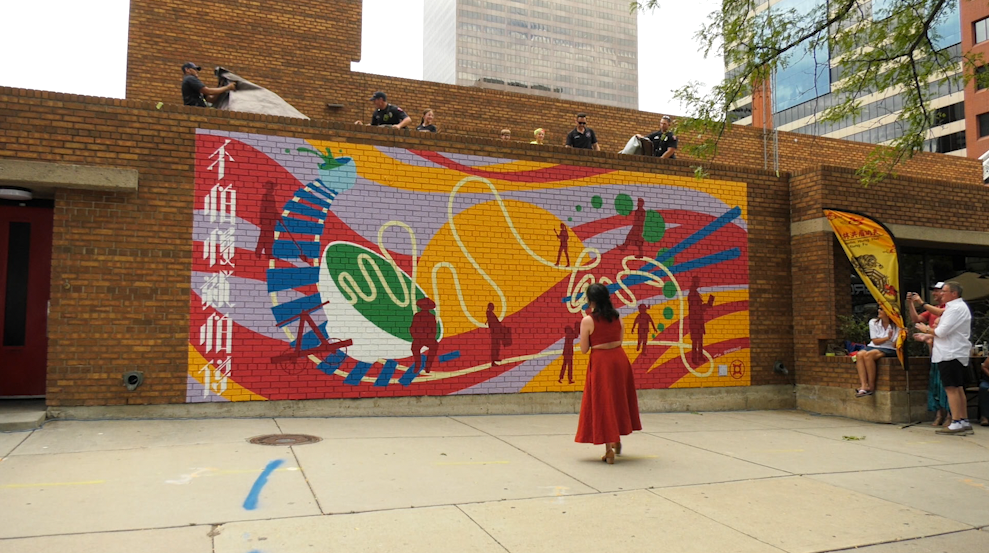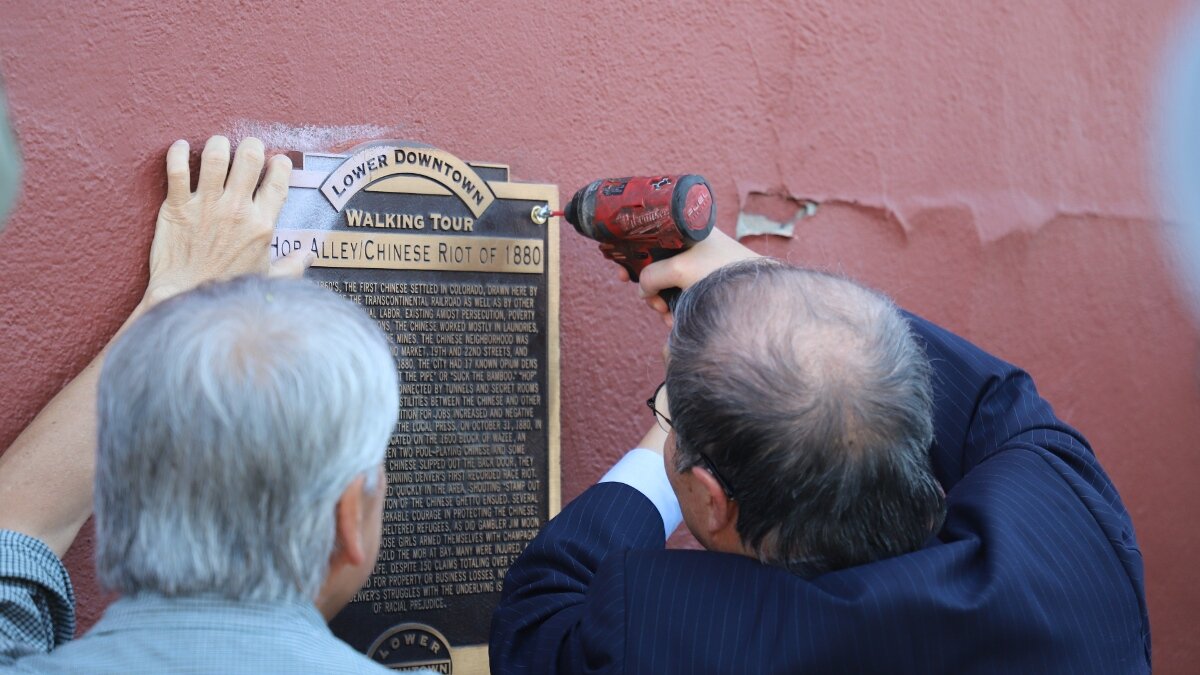New historical markers provide an honest, overdue history of Denver’s Chinatown

DENVER — In the late 19th Century, Denver was home to one of the most prosperous Chinatowns in the West. You could be forgiven for not knowing that.
For more than a century, Denver did little to acknowledge the city’s historic Chinatown, which
Colorado Asian Pacific United (CAPU), described as “a flourishing frontier community that provided a wide range of ethnic goods and services in a welcoming environment to Chinese immigrants working in Colorado and the Intermountain West.”
Historians, advocates and members of Denver’s Asian American community are working to fix that. CAPU, the Denver Asian American Pacific Islander Commission and other city leaders celebrated the unveiling of a new mural and three historic markers Sunday that provide an accurate, thorough history of a once-thriving neighborhood.
“Unfortunately, because of an anti-Chinese race riot in 1880, a xenophobic society and racist legislation, we no longer have a Chinatown,” said Joie Ha, the vice chair on the CAPU board and project manager for the revitalization project.
The mural — painted by Nalye Lor — and three historic markers are the end result of the “Reimagining Denver’s Historic Chinatown Project,” which was organized by the aforementioned organizations.
You can take a virtual tour of Denver’s Historic Chinatown at this link.

Nalye Lor stands in front of her mural at its unveiling, Aug. 13, 2023
Many of the Chinese immigrants came to Denver in the 1800s to work on the railroads or in the mines. Over time, however, many of the workers were “relegated to marginal livelihoods,” as CAPU puts it, working as cooks or laundrymen.
Racism and discrimination were also common. And on Halloween in 1880, the long-simmering resentment among white people in Denver — who believed immigrants would negatively impact the city’s culture and economy — reached a crescendo. An estimated 3,000 to 5,000 white people converged in Denver’s Chinatown, destroying businesses and homes. The mob killed one person, a laundryman named Look Young. The four men who beat Young to death — James Corrigan, Edward Troendle, Frederick Miller and William Krueger — were found not guilty.
“Adding insult to injury, Denver’s anti-Chinese riot was cited as one of the reasons why the US Congress enacted the disreputable Chinese Exclusion Act (1882) to ensure social stability,” CAPU writes. “In other words, they blamed the victims for their victimization.”
For many years, an inaccurate and, to many people, offensive historical marker about the riot occupied a wall in Lower Downtown near the intersection of 20th and Blake. The plaque did not name Young. Instead, it read “one Chinese man lost his life,” thus sanitizing Young’s violent death at the hands of a white mob. The plaque did, however, name multiple white people and praised them for their “remarkable courage” in protecting some of the Chinese victims. The plaque also over-emphasized Chinese drug use in Denver, thus playing into offensive stereotypes, and, perhaps most egregiously, the plaque was titled “Chinese Riot of 1880.”
“It wasn’t a Chinese riot,” historian William Wei told Rocky Mountain PBS in a previous interview, “it was an anti-Chinese race riot.”

William Wei takes down a plaque in Denver that perpetuated harmful stereotypes against Chinese immigrants.
In August of last year, Wei used a drill to remove the plaque. Then-Mayor Michael Hancock, who months prior had officially apologized to the Chinese-American community on behalf of the city for the riot, said removing the plaque was a step “toward reconciliation and righting the terrible wrongs that were committed in the past against our Asian American community.”
The three new historical markers are a continuation of that process. The markers are located at:
- 1520 16th Street. This marker tells the overarching history of Denver’s Chinatown.
- 1620 Wazee Street. This marker focuses on the anti-Chinese race riot.
- 1890 Lawrence Street. This marker memorializes Look Young.
“We have to remember our history so we don’t repeat it,” said Denver’s director of public safety, Armando Saldate, at the Saturday event.
According to CAPU, the organization is working on creating similar displays for the Japanese and Vietnamese communities in Denver.
Kyle Cooke is the digital media manager at Rocky Mountain PBS. You can reach him at kylecooke@rmpbs.org.
Julio Sandoval is a senior photojournalist at Rocky Mountain PBS. You can reach him at juliosandoval@rmpbs.org.